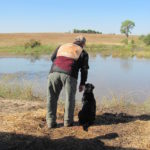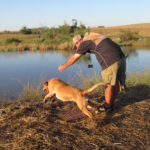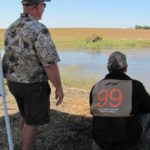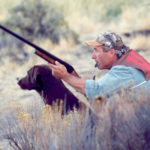A recent NRC report on rebuilding fisheries is right about some things, but if history is any indication, it’s wrong on others

Back in 1996, Congress enacted the Sustainable Fisheries Act (SFA), which rightly requires fishery managers to rebuild overfished stocks in a time period that is “as short as possible,” generally not to exceed 10 years (except in cases where the biology of the stock, other environmental conditions or international agreements dictate otherwise). By all means, reasonable to most anglers who want to enjoy such rebuilt/abundant fisheries… in our lifetimes.
Congress, with what appeared to be overwhelming support of the American people, reaffirmed the need to rebuild stocks promptly when it reauthorized the Magnuson-Stevens Act in 2006, upholding the “as short as possible,” timeframe, but also explicitly directing fishery management councils to heed the advice of independent scientists on their Science and Statistical Committees regarding biologically-based maximum fishing levels. This provision essentially isolated Council decisions from political pressure to do the wrong thing, as the scientists would be the ones setting the maximum harvest levels. Congress, as well as conservation-minded angling groups, understood that such a provision was necessary to alter the cultural predisposition of regional fisheries management councils to discount scientific recommendations if there might be some short-term economic pain for their constituencies.
In addition, the Magnuson reauthorization required firm catch limits and accountability measures be established to ensure that such fisheries were indeed rebuilt. In short, the 2006 Reauthorization gave fishery management law real teeth and thus far it appears to be working. Rebuilding for the majority of federally managed species is either done, or getting done.
Unsurprisingly, the resulting fishing restrictions have caused some economic pain, suffered not only by the commercial fishing industry, but the recreational sector also, as seasons and bag limits shrink and stocks recover from decades of overfishing. A slow economy probably hasn’t helped the situation.
Responding to concern about such economic and social impacts in their states, and, well, a chorus of disgruntled fishermen who want to be able to kill more fish than the current law allows, members of Congress recently requested that NOAA fund a National Research Council (NRC) assessment of the rebuilding plans and their associated ecological and economic effects. Most of what they found generally wasn’t surprising. From the document:
- The current rebuilding approach has “resulted in demonstrated successes in identifying and rebuilding overfished stocks.”
- “fishing mortality has generally been reduced, and stock biomass has generally increased, for stocks that were placed in a rebuilding plan.”
- “the long-term net economic benefits” have been “positive.”
- “the legal and prescriptive nature of rebuilding mandates forces difficult decisions to be made, ensures a relatively high level of accountability, and can help prevent protracted debate over whether and how stocks should be rebuilt.”
- “setting rebuilding times is useful for specifying target fishing mortality rates for rebuilding and for avoiding delays in initiating rebuilding plans.”
Yet, even as the NRC Report confirms the well-documented and unprecedented success in rebuilding fisheries, it strangely enough suggests that policymakers consider policy changes that could very quickly undermine that success, most notably the elimination of mandatory deadlines and rebuilding targets set forth in the 1996 SFA. Although it doesn’t explicitly call for a change in the law itself, the report does appear to recommend reversing course on the strict deadlines and rebuilding targets that repeatedly and successfully rebuilt depleted fish populations. I do understand the reasoning, but I think there’s a huge lack of perspective here.
First, the report points out that, given the many environmental factors that can affect population size in addition to fishing, there is considerable uncertainty about how fast fish populations will grow. For example, climate change and other ecological factors can certainly drive changes in fish stocks. Thus, the report argues, rebuilding fish populations within a certain timeframe cannot be assured.
That may be the case, but there are a couple of key points here that the report ignores. One is that we have no control over natural mortality that comes with such environmental and ecological factors. And, well, natural mortality plus fishing mortality equals total mortality. While we can’t control that other stuff, we can control fishing mortality. Whether we can control fishing mortality enough to allow a stock to rebuild within a time certain, in light of the above mentioned natural factors, is indeed a relevant question. But the fact that the majority of federally managed stocks have rebuilt or are rebuilding within the prescribed time frames strongly suggests we can. Sure, there are some that haven’t, but the current law allows consideration of such natural factors in those fisheries when setting rebuilding timelines. As I said, above, the law stipulates rebuilding “in as short as time as possible”, which in most cases is 10 years “except in cases where the biology of the stock, other environmental conditions” dictates otherwise. So, such non-controllable factors are actually already addressed under current law.
The report goes on to identify strategies for accommodating uncertainties which could lessen short-term economic and social impacts. For one, it recommends taking earlier action to avoid overfishing by imposing prompt but gradual limits on fishing when fish populations start to drop rather than waiting until they are overfished. No argument here. This strategy could help managers avoid the stricter limits that come with rebuilding badly depleted stocks. The ASMFC should certainly take note of this one (e.g. striped bass).
Yet the report also recommends basing rebuilding plans on monitoring and controlling fishing levels, rather than on requiring that fish populations recover to a pre-specified target size within a certain timeframe, arguing that this strategy might be less disruptive. In other words, if managers could keep fishing at a reduced but constant level for a longer period of time, they could rebuild fish stocks while allowing higher harvest levels.
Of course, that seems obvious right? Why not let people kill more fish while the stock is recovering, and just let that recovery take longer? But what does “longer” mean? Instead of 10 years, 20 years? Or 40 years!? Don’t know about you guys but I want to see fish stocks rebuild in my lifetime. Fish are a publicly owned natural resource, and should be managed for the benefit of everyone. Seriously, why should I have to lose charter business because the resource-extractive sectors want to kill more fluke and drive the stock down to levels where they aren’t available to me? Regardless, aside from those questions, the suggestion disregards the last 30 years of fisheries management history.
Prior to 1996 (when SFA was passed), managers were able to put off rebuilding in the name of minimizing economic impacts, and the result was, well, it was chronic overfishing. It doesn’t take a, brain surgeon, or, ehm, a fisheries scientist to figure that one out. The longer the rebuilding period, the longer managers, under extreme pressure from their constituents and politicians, put off rebuilding as most federally managed stocks bounced along at a low level. This hurt everyone in those fisheries, but particularly anglers. Commercial fishermen, at least the good ones, could always find fish to scoop up via net. But anglers, using the least efficient gear and having the least range, and who really depend on abundance, were stuck busting their rear-ends to find a 14” fluke. Even after SFA was enacted, NOAA Fisheries and the Councils had to be sued before they would institute rebuilding plans that had any real chance of success.
Such reluctance to act also demonstrates the hazard inherent in the previously mentioned “environmental factors beyond our control” language. If managers can shirk their responsibilities by claiming that the condition of an overfished stock is beyond their control because of environmental conditions, it’s very likely that they will find countless excuses that “justify” rebuilding failures. Fishermen are notorious for placing blame for declining stocks on predation, development, pollution, climate change—anything but fishing. While these factors are certainly relevant, they do not justify continued overfishing. When fish populations face stress from environmental factors, it doesn’t make sense to continue to catch them faster than they can reproduce, yet fishermen routinely point to such problems, and try to use them as excuses for overfishing collapsed stocks. Southern New England winter flounder is a darn good example of that.
My overarching point is this: without firm deadlines and rebuilding goals, managers don’t have the balls to rebuild. Speaking from a Manager’s perspective (I sit on the Mid Atlantic Council), I absolutely understand this. It’s really freak’n hard to make the difficult but necessary decisions that will cause substantial short-term pain, but are needed to ensure long term sustainability. It’s particularly tough when your constituency and in some cases politicians are crying for more fish. The sort of “flexibility” the NRC report seems to be endorsing will give the Councils ample reason to avoid making those tough decisions and to perpetually put off rebuilding.
Advocates of flexibility will continue to say that a 10-year rebuilding requirement is “arbitrary” and not science-based even when such deadlines are endorsed by scientists and, in fact, are actually being met! And I suppose in the strictest sense, 10 years could be considered arbitrary. But so is any deadline. 20 years is just as “arbitrary” as 10. Perhaps I’ve become too cynical, but I have to think that Council members, seeking to placate their constituents, would be unlikely to work any harder to recover a stock in 20 or 30 years than in 10. And even after that, there’s no reason to believe managers would get serious about rebuilding and wouldn’t only ask for more flexibility down the road. I have to believe that it would be nearly impossible to implement any finite time frames in any rebuilding plan if we were to take the report’s suggestion seriously. In truth, “flexibility,” is merely a euphemism for “delay”, and building more “flexibility” into the management system would merely allow managers to avoid the obligation to recover fish populations, and lawsuits resulting from their failure to do so
I talked about this pretty extensively in my first blog. But I’m gonna hammer it home again, because it needs to be said over and over again. The firm rebuilding goals and timelines are working. So much so that I’ve created a “summer doldrums” business for summer flounder (fluke) for my light-tackle clients. Fluke, despite all the wailing and gnashing of teeth (e.g. “it can’t be done”, “we’ll all go out of business”) was rebuilt to a level where we are pretty much all benefiting now! According to NOAA Fisheries summer flounder recreational landings were up 700% from 1989 to 2011 when the stock was rebuilt!
I certainly understand that the situation down south is quite a bit different, and I’m the first one to admit that I’m not an expert on red snapper. But I do know that one of the defining aspects of that rebuilding plan is that red snapper is much longer-lived and slower growing than a species like summer flounder (or bluefish, black seabass or scup for that matter), and the pain that comes with such rebuilding will likely last a lot longer. I also understand there are data problems. But I have to say that the complaints from snapper fishermen sound very similar to what we were hearing from the summer flounder crowd about 6 years ago. Regardless, to blow up an entire management system, which the conservation minded angling community worked so hard to get in place, and which, overall, appears to be benefiting anglers (who of course rely on abundant fisheries) is pretty damn stupid and short-sighted, especially considering the fact that the vast majority of anglers don’t even really target red snapper.
It’s pretty clear to me that, overall, science-based goals and firm deadlines serve the general public well, even if a few business interests may have to suffer temporarily. The case of summer flounder makes that clear. Today, the average Joe can go out into the Bay with his kids with the reasonable expectation of catching a few keeper fluke. That simply wasn’t the case just a few years ago.
But back to the NRC report… I didn’t find its criticism of the use of timelines and rebuilding goals to be balanced or compelling. It acknowledged, but then dismissed, their efficacy to date, and the criticism was based on theory rather than real-world experience. While there have certainly been and continue to be problems with the rebuilding programs, I’m pretty sure they are just “growing pains” which, assuming we leave Magnuson intact, will probably abate as the process continues to mature. With any real world regulatory programs there is always “messiness” in the beginning. And really, such problems are being addressed by the Councils within the constraints of the current law which already offers sufficient flexibility. Furthermore, the report failed to coherently and specifically provide an alternative approach, let alone demonstrate that such an approach would have produced superior (or even similar) results.
But where does it leave us? I’m afraid not in a very good place. The NRC report, despite clearly recognizing that the rebuilding timelines and goals are working, is quickly becoming “Exhibit A” for the same “more-fish-for-me” crowd that has been working so hard to tear the heart out of the Magnuson Act’s provisions since 1996. The very provisions that have allowed extraordinary recoveries such as summer flounder to occur.
Perhaps it’s an Irish trait to always have a half-empty glass, but I have a somewhat bleak outlook on the next Magnuson Reauthorization. The good guys no longer appear to be the good guys, and the public is so darn anti-government/anti-regulation right now. And then there’s freak’n red snapper, which very few anglers even target, but that stupid fish seems to be driving the debate. Perhaps most importantly, we don’t have strong leadership on fisheries on the Hill anymore (e.g. Stevenson and, well George W., who was actually quite good). On the other hand, Congress is so dysfunctional, it’s entirely possible this doesn’t move at all. Pretty pathetic, but really, that may be a saving grace. (Note: my “copy editor” calls this paragraph “needless whiny pessimism that isn’t helping anything.” I don’t disagree).
Congress is already holding hearings on the Magnuson Stevenson Act Reauthorization. I actually testified in front of the Senate Subcommittee on Oceans, Atmosphere, Fisheries and Coast Guard in July. You can find the archived testimony here. Note that my testimony begins at 1:29. Yet a more recent hearing in the House had a completely different tone: a bunch of guys referencing the NRC’s suggestion for flexibility in rebuilding timelines and goals. Congress needs to keep hearing from anglers and small business owners like me (and you!) who have and continue to benefit from rebuilt stocks, and not just from the more-fish-for-me crowd who’s new rallying cry around the NRC report is “we told you so”.
Well, the facts show that “WE told you so”. Nearly two-thirds of the stocks put in rebuilding plans since 1996 have either rebuilt to healthy population levels, or have made significant rebuilding progress. This rebuilding success was responsible for an increase in estimated gross commercial revenues of $585 million—92 percent higher (54 percent when adjusted for inflation) than revenues at the start of rebuilding. That is incredibly significant.
It would be unwise to go back to a policy that seemed to have so obviously failed our fisheries, our fishermen and the general public. But that’s exactly where we’re headed if we don’t make our voices heard and exercise our right to influence the direction of fisheries policy. As we get down to reauthorization time (when that might be is really anyone’s guess right now), we have to let Congress know that this is not what we want. Stay tuned and I’ll let you know how we can do that.

















I’d like to echo a big AMEN. As a conservation professional and lifelong hunter – we owe it to wildlife to hunt with skill and do everything we can to avoid leaving wounded animals in the field. Well put Dr. Arnett!